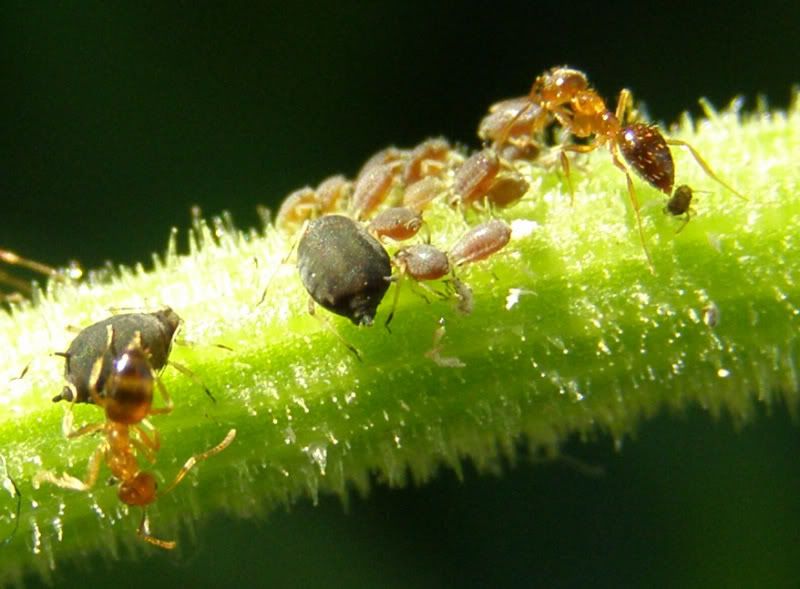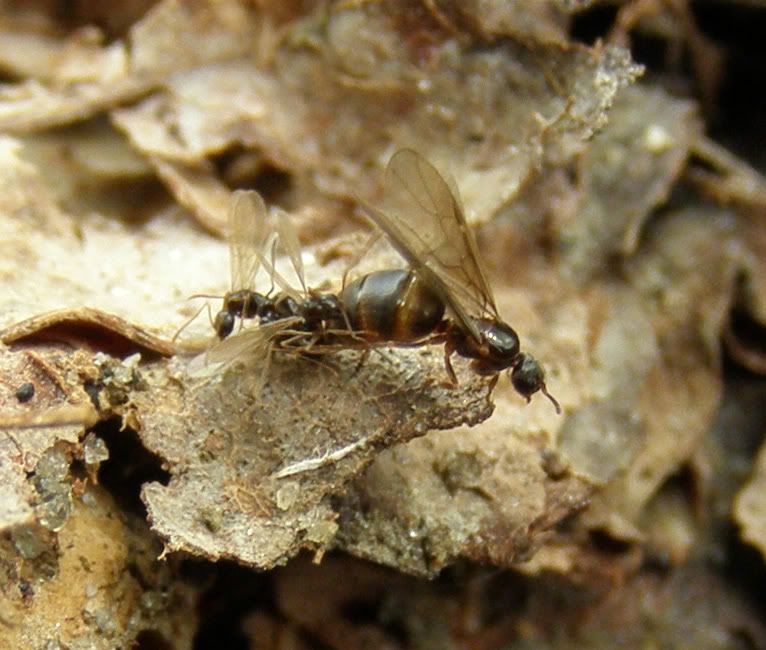
The "genus group" itself is modeled after ants with traits in common with our native Prenolepis imparis, the Winter Ant. They're also called the false honey ant because their commonly seen replete caste (the fat ants above that are not queens) resemble regular Honey Pot Ants, Myrmecocystus sp. But those are restricted to the south west US. P. imparis is far more commonly encountered. This genus is more diverse elsewhere in the world but our understanding of them today is that only one species occurs in the US. This isn't "uncommon," but it's suggestive that the varieties of this ant that we know of could one day be moved to species level.
The study probably effected the genus Paratrechina the most, at least for us in the US. The main species that described this genus was Paratrechina longicornis. As pointed out in the study though it had several traits unique to itself from other Paratrechina. Thus the other species it was paired with didn't really fit in the genus. For North America I'll point out it was also the most wide spread of the other species. This is why Paratrechina longicornis is now the only species remaining in the genus. All the other species were moved to another genus called Nylanderia.

Paratrechina/Nylanderia are small inconspicuous ants. Pictured above we see the ants are about the size of a raspberry seed. This might be Nylanderia faisonensis but honestly this ant is so tiny it boarders on my ability to identify.

For the most part colonies go unseen. The most common encounter the average person has with this ant is likely through potted plants. A whole colony can easily move into a house plant or rummage through a greenhouse easily. They simply feed off of normal nectar sources from the flowers, or take advantage of the local aphid problem. Damaged fruit is another spot one might see this ant.

Nuptial flights, if you can call them that, occur in the spring time, April or May usually. Mating is commonly witnessed happening right on the ground. Here you can make out 2 or 3 males attempting to tackle a queen.

Colonies were easy to raise but are easy to get bored with. I never really gave this ant much attention but after reading this study I think I'll give them another shot.
For better images of these ant check out Alex Wild's gallery. Nylanderia, Paratrechina longicornis, Prenolepis imparis.